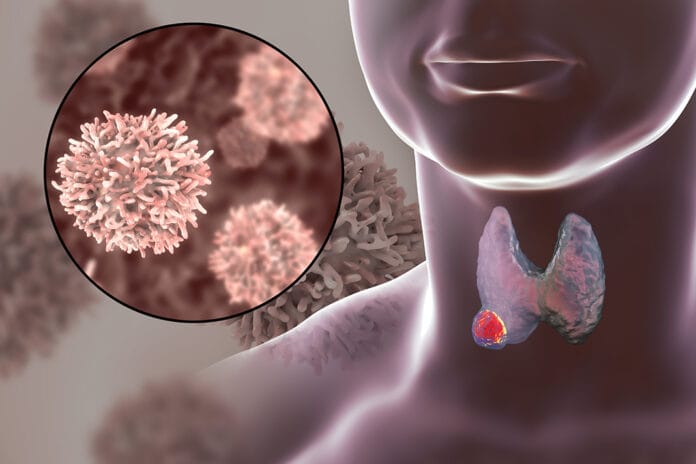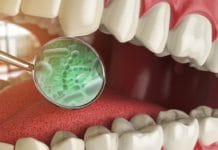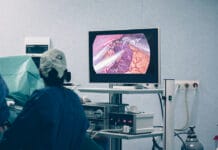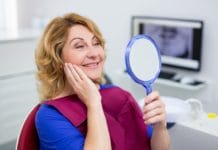WARNING: Graphic images contained in this thyroid cancer article.
With limited appointment times and an increasing number of tasks to accomplish, dental hygienists may be tempted to skip the head and neck examination. Every dental hygiene procedure and treatment protocol seems necessary, and yet we still need to disinfect the operatory and prepare for the next patient.
The lack of time is a common issue among many hygienists. Even more commonly, additional responsibilities are being added, such as appointment scheduling, treatment planning, accepting payments, and presenting treatment plans.
‘A More Thoughtful Comprehensive Exam’
How do dental hygienists decide what to prioritize? One amazing hygienist can really put into perspective how and why to do a thorough cancer screening at each appointment. She offers tips on what to say to those diagnosed with cancer and provides some great home care options.
Kara Bisesi, RDH, has a bachelor’s degree in biology from Bowling Green State University. She earned her dental hygiene degree from Stark State College in Ohio, where she was awarded the Golden Scaler Award. Kara lives in Wadsworth, Ohio, with her husband Joe and two adorable young daughters.
Kara graciously agreed to be interviewed after I read some comments she posted on social media. For example, she recently noted, “We all fall into a relaxed exam; while what we need is a more thoughtful comprehensive exam, it can’t be skipped for time! We are licensed providers, have the education and knowledge to know better and to do better.”
Kara reminds us to bring all exam findings directly to the patient’s attention and to recommend follow-up with a medical doctor as needed. She said, “We need to push patients to follow up. Many of our patients will have no symptoms or believe symptoms can be attributed to something else, or even fear the diagnosis.” Kara knows this firsthand.
Life Goes on Until…
In October of 2019, Kara had a terrible cold and was about to deliver her second child. Her doctor had recently retired, and she scheduled with a new primary care provider. The new doctor’s first words were, “You have a huge goiter!”
Kara knew it was there and assumed it was nothing. Her current OB/GYN had never mentioned it, and her previous primary care doctor said her blood work was fine, adding that there was no need to worry. It’s the “no need to worry” that can get us into trouble. We should always seek out the reasoning for an unusual finding or feeling, even when asymptomatic.
There were potential reasons, including weight gain, to rationalize the swelling being nothing. She attributed the swollen lymph nodes to the cold or fatigue. Kara trusted her doctors to be prevention-focused and advocates for her overall health. She now knows she should have trusted her gut instinct.
Kara was ready to deliver her second child at any time. She delayed scheduling the referral for an ultrasound of her neck. Then there was an infant to take care of, followed by the news of COVID-19 disease spreading overseas and into the United States. Soon, all non-emergency medical procedures were shut down, and it was easy for Kara to just live life ─ not thinking about the swelling in her neck.
In July 2020, the ultrasound was completed, and Kara noticed the technician focusing on the left side of her neck. A telephone message then arrived, saying that it was imperative for her to call the doctor’s office immediately. Kara felt her heart sink.
The doctor said, “Call the endocrinologist and schedule a fine needle biopsy, as well as a head and neck CT scan ASAP, like now!”
The CT scan was performed on a Sunday and showed multiple tumors. The biopsy was performed the following Friday, but results were inconclusive, which unfortunately happens for a variety of reasons ─ perhaps not enough tissue was taken or difficulty reading the cells. The surgeon advised removal of the tumor, even if benign, then possibly radioactive iodine treatment.
The Second Opinion on Thyroid Cancer
A relative suggested a second opinion to be sure of the diagnosis and treatment options. Kara said, “On July 29, 2020, we were blessed enough to get a second opinion with Dr. Brian Burkey at the Cleveland Clinic Main Campus.”
Additional diagnostic tests were performed, including a chest CT, additional blood work, EKG, and repeat biopsy. She reported that on August 10, 2020, “I was in surgery for over 10 hours for a bilateral neck dissection for a TT, or total thyroidectomy, along with the removal of muscle from the left side of my neck, surgical repair to my right jugular vein, removal of all of the lymph nodes from under my chin, along both sides of my mandible, down both sides of my neck, as well as the right and left side lower neck lymph nodes, under and around my clavicles. All in all, 82 lymph nodes presented with metastatic papillary thyroid carcinoma (MPTC), and 34 presented with hobnail/micropapillary features. My diagnosis: papillary thyroid cancer with a rare, aggressive variant (hobnail). This variant increases my chance of recurrence to the range of 30% to 40%.”
Understand that the first surgeon recommended a simple procedure to remove the tumor and then possibly do radioactive iodine treatment. The surgeon, during the second opinion in just two weeks’ time, was able to offer a firm diagnosis, treatment options, and perform a very different and very radical 10-hour surgery.
This truly shows that we need to be proactive with our patients by completing a thorough oral cancer screening, recommending follow up as needed, and checking back to help make sure the patient understands the importance of care. Second opinions are a way to confirm a diagnosis, discover treatment options, and find the medical team that is the best fit for the patient.
Recovering from Thyroid Cancer Surgery
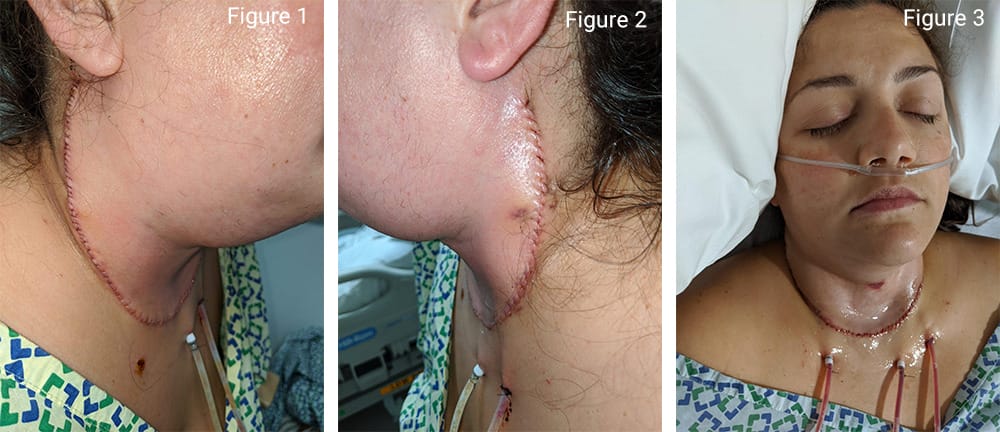
Figure 2: Left side shows from ear-to-ear surgical site. Photo courtesy Kara Bisesi.
Figure 3: You can see the swelling and double chin due to fluid accumulation even with the drains. Photo courtesy Kara Bisesi.
She said, “The first night in the hospital, they allowed my husband to stay just long enough to get me up to my room. Due to COVID-19 restrictions, he had to leave immediately. I could barely talk due to being extremely hoarse from being intubated, and they are still hoping there is only temporary damage to my vocal cords, along with paralysis of the left side of my tongue and lower lip (see Figure 4). This is due to the extent of the disease and how they had to retract the major nerves to protect them from being severed during surgery.”
Though Kara participated in years of choir, she cannot sing now, which is a constant reminder of her cancer as she struggles with nighttime lullabies to her young children.

Kara’s initial recovery was nightmarish. “Shortly after my husband left, my blood calcium started to crash, and I started to panic,” she said. “When you are coming out of anesthesia, the symptoms are similar to low calcium warning signs, and due to my inability to fully articulate what was happening, it got worse before it got better, leading me into a panic and fear that I had made a horrible mistake and may die. It felt as though my entire body was vibrating on full blast. My body started cramping up, the nurse was unable to uncoil my arms or fingers, my vision was blurry, so I could not make out my nurse’s face, but I could recognize her voice, and my heart was racing. Thankfully after a long, four hours, things slowly started to turn around, and it took about two full days before my vision returned. I was in the hospital for a week prior to being released.”
She added, “I would have several weeks of in-home physical therapy before being cleared to move to outpatient physical therapy. Altogether, I’ve missed just over five months of work as the result of my surgery being so extensive and the additional treatment required.”
Kara states, “The best course of treatment for most cancer is usually surgery to have it removed if possible, usually followed by radiation, chemotherapy, etc. Thyroid cancer is thankfully one of the few with a higher probability of cure rate after thyroidectomy and radioactive iodine therapy.”
She pointed out that chemotherapy is not generally used since thyroid tissue usually does not respond to currently available chemotherapy drugs. For her, due to the hobnail variant, which is more aggressive and harder to kill, Dr. Burkey and a tumor board at Cleveland Clinic recommended external radiation followed by radioactive iodine therapy (RAI).
Dr. Shlomo Koyfman, an oncologist at Cleveland Clinic, managed her seven-week long regimen of daily (Monday through Friday) external radiation. The radiation treatments lasted from September 28, 2020, to November 13, 2020.
Kara returned to work during her radiation treatment with plastic wrap secured around her neck. Her skin was literally melting off as a result of the high dose of external radiation (see Figures 5, 6). When the symptoms made it too difficult, she took a leave of absence from work.
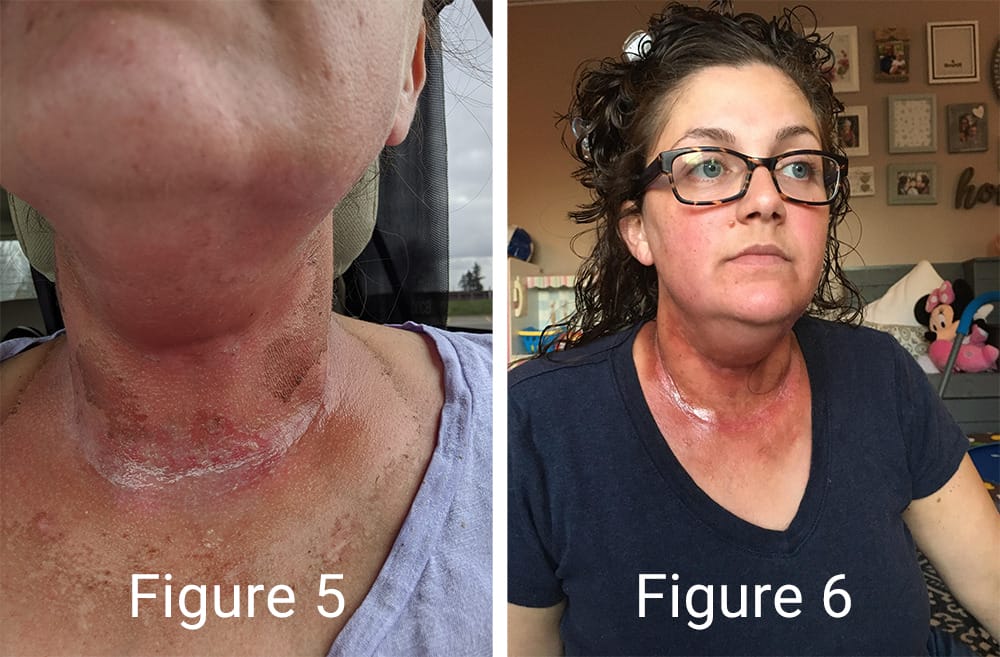
Figure 6: Here you can see the early peeling and blistering of the skin, as well as and obvious redness of the skin. Under Kara’s chin, you can see the fluid buildup. Photo courtesy Kara Bisesi.
As mentioned above, the standard treatment of papillary thyroid cancer usually includes RAI. This involves a multiple-step process that can vary based on multiple factors, including the type of thyroid disease, cancer, hypothyroid, hyperthyroid, etc. She said that the first step for her was to stop taking levothyroxine for hypothyroidism, followed by a period of temporarily taking liothyronine to raise her thyroid-stimulating hormones (TSH) levels, temporarily placing her in a state of hypothyroidism.
She was also temporarily on a low-iodine diet. “The idea is you can trick any remaining thyroid cancer cells by essentially activating them, starving them of iodine,” she said. “Thus, it will trigger any remaining thyroid cells, whether cancerous or not, to start making more iodine uptake pumps. This way, when they receive the RAI, they will be hungry for it and absorb it more readily, which should kill the cancer cells.”
The RAI treatment dose can be determined by having a tracer dose followed by a whole-body scan. The scan results are used to calculate the percentage of uptake of RAI, determining the treatment dose of RAI needed. This is also used to determine the amount of time the patient will need to be in isolation since patients are radioactive immediately upon taking the RAI.
Kara said, “My isolation period was technically only four days but extended to a full week due to extra precautions because two of my co-workers were pregnant and my children are very young. Therefore, making it extremely difficult for me to return to work or home sooner than one week.”
Dental Concerns for Papillary Thyroid Cancer
She said the “daily challenges” arising from her diagnosis were “staying out of my own head and focusing on the moment. It’s so hard to hear the word cancer.”
She added, “That being said, I fully acknowledge how lucky I am. As I know, many other cancers do not have as promising of odds.”
Kara said she feels blessed with an extraordinary family that has been able to roll with caring for the children, home life, and be emotionally supportive. She swears her husband is the true rock star.
“From the clinical hygiene standpoint, I think we all share most of the same daily challenges. We all wish we had time in our appointments to do everything we were trained to do as medical professionals. Each of us can prioritize our time to be providing a purposeful and systematic head and neck exam, as this can truly be lifesaving!”
Kara reinforces that dental professionals know how important early intervention is. During the head and neck exam, Kara tells every patient to check their thyroid often. Dental professionals can demonstrate the procedure, explaining the potential for abnormalities in the thyroid and lymph nodes as she goes. This is a logical extension of the intraoral cancer exam, asking patients to look for any abnormalities and schedule an appointment to have unusual findings evaluated.
Papillary thyroid cancer is the most common thyroid cancer, making up approximately 80% of thyroid cancers with over 20,000 per year. According to the Columbia Thyroid Center, most patients are under 40, with the majority having no risk factors.1 Many will present as asymptomatic with perhaps a feeling of fullness or unusual swallow. The swallow can be described as slow or with great effort. Some say it is a feeling that there is constantly a blockage in the throat when swallowing. Some may have a swelling in the thyroid and the lymph nodes in the neck.1
Certainly, our professional goal is to catch these irregularities when they are small and early on to offer the best diagnosis. Document any clinical findings, refer for further examinations, and stay in contact with the patient to ensure they have sought out medical care.
Kara is a great example of knowing that something may be wrong but not following through. Busy lives, fear of the unknown, and even denial make it simple to let time pass. Cancers grow, become more invasive, and even change the treatment options. A caring reminder from a healthcare professional may be all that is needed to help get on track with scheduling for evaluation.
If a cancer diagnosis is made, request the patient share their diagnosis and treatment plan. Some patients may wish to share their thoughts and feelings with you. Be prepared to be supportive and open to listening. Discuss potential oral side effects such as xerostomia, sore oral tissues, extremely chapped lips, altered taste, lack of appetite, and potentially increased caries.
Kara stresses the need for excellent home care, recommending woven floss, nightly humidifier use to combat the dryness, fluoride varnish applications, home fluoride tray use, and the need for an electric toothbrush. Interestingly, Kara found the metal tongue scrapers to be superior to the plastics she had tried. Each patient will have their own favorites but trying multiple products and brands may help with the ease of home care.
Many patients will suffer from xerostomia, and discussing possible treatment options in advance of symptoms can be very helpful. Sugar-free hard candies can help stimulate salivary flow. Many doctors will recommend hard candies but not discuss the detriment of sugar to the oral cavity. What your patient does not need is rampant tooth decay! Noncarbonated, low pH, sugar-free beverages can be sipped throughout the day.
Consider multiple dry mouth products such as pastes, gels, rinses, lozenges, and sprays. Consider multiple brands to see which combination is most beneficial. Discuss the drying effects of caffeine. Smoking cessation options should be discussed if that is an issue. If radiation is included in the treatment plan, depending on the location and amount, discuss the potentially higher risk of osteonecrosis with extractions or oral surgery.
Our patients look to us for support on many levels. We need to begin with a complete and thorough examination. We need to follow with referrals as needed and offer support, guidance, and excellent home care instructions. Be a sounding board; know that for some, the diagnosis itself is so overwhelming it can be difficult to follow through on the mundane, day-to-day of home care or excellent nutrition. Perhaps send a card, text, or take a moment to make a call and check-in. These few minutes spent maybe just the thing to brighten someone’s day.
When performing an oral cancer exam, include the thyroid gland. Feel for any irregularities in the front of the neck as well as the lymph nodes under the mandible and down the sides of the neck. There are many exam formats that can be easily followed; Detecting Oral Cancer: A Guide for Health Care Professionals (nih.gov)2 is a clear, simple example. The Oral Cancer Foundation has several resources as well.
Our work as hygienists encompasses so many arenas besides dental health and home care, including temporomandibular joint exams, airway evaluations, and head and neck cancer screenings. We are offering the patient a much greater benefit and know that your excellent comprehensive examination may be saving a life.
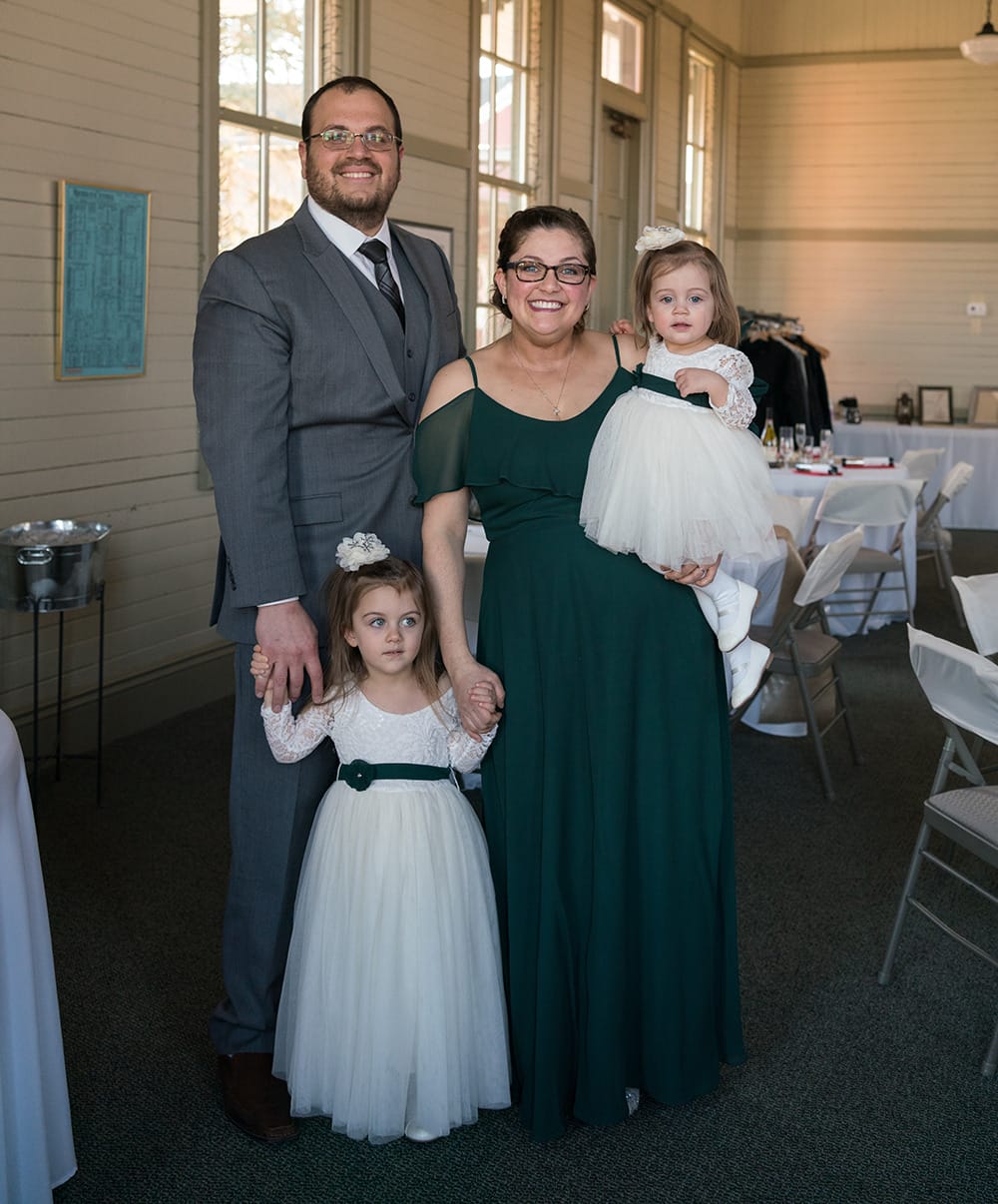
Need CE? Check Out the Self-Study CE Courses from Today’s RDH!
Listen to the Today’s RDH Dental Hygiene Podcast Below:
Thyroid Cancer References
- Papillary Thyroid Cancer (n.d.). Columbia University Irving Medical Center: Columbia Thyroid Center. Retrieved from https://columbiasurgery.org/conditions-and-treatments/papillary-thyroid-cancer
- Detecting Oral Cancer: A Guide for Health Care Professionals. (2013, July). U.S. Department of Health and Human Services: National Institutes of Health. Retrieved from https://www.nidcr.nih.gov/sites/default/files/2017-09/detecting-oral-cancer-poster.pdf

